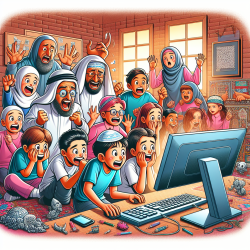Understanding the intricate interplay between culture, language, and healing is essential for practitioners who strive to improve therapeutic outcomes for children. The research article "Cultural Poetics of Illness and Healing" by Laurence J. Kirmayer offers profound insights into how cultural narratives and metaphors shape the experience of illness and the process of healing. This blog post aims to distill key takeaways from the research and provide actionable strategies for practitioners.
Key Insights from the Research
The Role of Metaphor in Illness and Healing
Metaphors are more than linguistic flourishes; they are cognitive tools that shape how we perceive and interact with the world. According to Kirmayer, metaphors can significantly influence both the experience of illness and the process of healing. For example, the metaphor "life is a journey" can be particularly resonant in trauma therapy, helping patients conceptualize their healing as a path they are traveling.
Embodiment and Enactment
The research emphasizes the importance of embodiment and enactment in understanding illness. Embodied metaphors, such as describing anger as "boiling" or "simmering," can provide practitioners with a framework to understand and address the physical manifestations of emotional states. This approach can be particularly useful in pediatric therapy, where children may struggle to articulate their feelings verbally.
Cultural Affordances
Cultural narratives and practices offer a rich repository of metaphors that can be leveraged in therapy. For instance, Indigenous healing practices often frame illness and recovery within the context of a journey, which can be a powerful metaphor for children undergoing therapy. Understanding these cultural affordances allows practitioners to tailor their therapeutic interventions to the cultural backgrounds of their patients.
Actionable Strategies for Practitioners
Incorporate Metaphors in Therapy
Use culturally resonant metaphors to help children articulate their experiences. For example, if a child is struggling with anxiety, you might use the metaphor of a "storm" to help them describe their feelings and develop coping strategies.
Emphasize Embodiment
Encourage children to express their emotions through physical activities, such as drawing or role-playing. This can help them externalize their feelings and make them more manageable.
Leverage Cultural Narratives
Incorporate stories and metaphors from the child's cultural background into your therapeutic approach. This can make the therapy more relatable and effective.
Encouraging Further Research
The insights from "Cultural Poetics of Illness and Healing" underscore the importance of ongoing research in this area. Practitioners are encouraged to explore how different cultural metaphors and narratives can be integrated into therapeutic practices to improve outcomes for children.
To read the original research paper, please follow this link: Cultural poetics of illness and healing.










